American Military History: Iconic Civil War Generals
Explore the Iconic Civil War Generals
The history, stories, and flags of America's 19th century generals.
The Civil War
The American Civil War was defined not only by its battles and turning points but also by the legendary figures who led troops into battle. Below, you can learn about the major generals that had an impact on the Civil War. From their pre war days to their most notable moments, this page has everything you need.
At Gettysburg Flag, we write to honor their legacy, but we also have a collection of historically accurate Civil War flags, representing the regiments, divisions, and banners that flew under their command. Our high-quality American flags allow you to own a piece of American history and we are so proud to have it available for you.
For more context on the Timeline of the Civil War or American history information in general, you can find all of our historical content on our historical references page.
Generals from the Union
Ulysses S. Grant
Click to learn more
William Tecumseh Sherman
Click to learn more
George B. McClellan
Click to learn more
George Gordon Meade
Click to learn more
Philip Henry Sheridan
Click to learn more
Winfield Scott Hancock
Click to learn more
James Birdseye McPherson
Click to learn more
George Henry Thomas
Click to learn more
Early Life
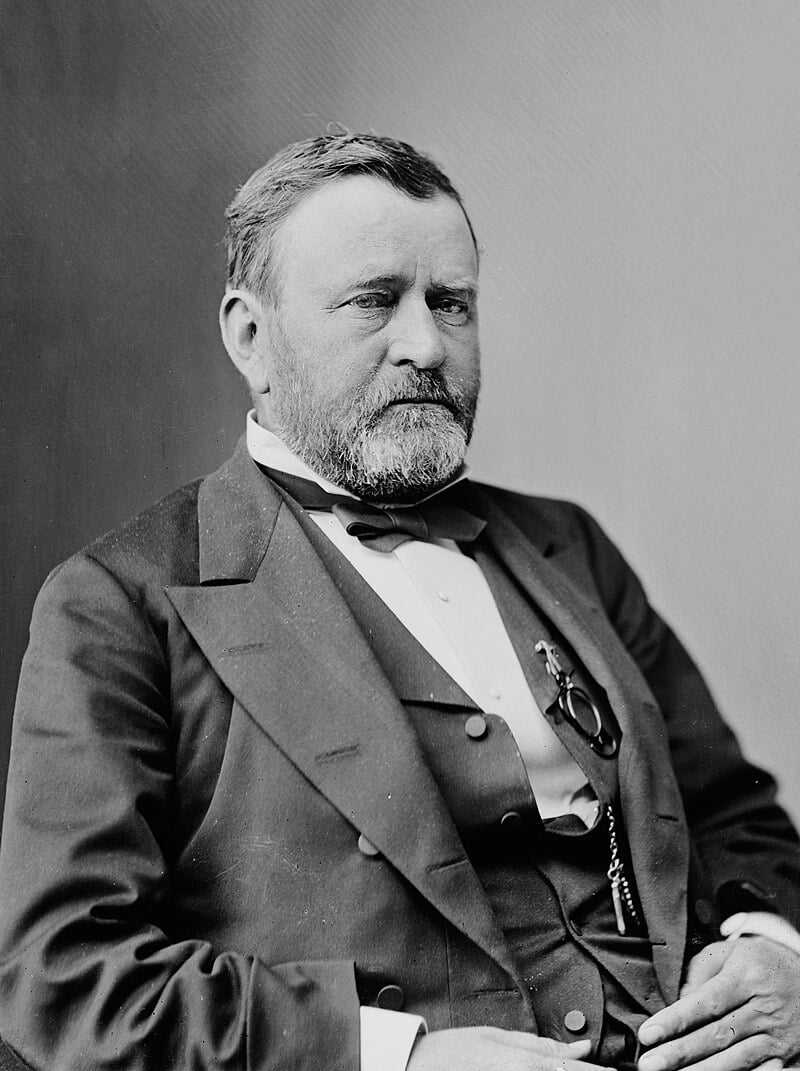
Ulysses S. Grant was born Hiram Ulysses Grant on April 27, 1822, in Point Pleasant, Ohio. At an early age, Grant developed a deep love for horses, a skill that would later serve him well in both the military and his personal life.
A defining moment of Grant’s early years came when his father arranged for him to attend the United States Military Academy at West Point. Due to a clerical error, he was mistakenly enrolled as "Ulysses S. Grant" instead of Hiram Ulysses Grant. Instead of correcting it, Grant accepted the new name, which would later become world-famous. While at West Point, Grant excelled in mathematics and horsemanship but showed little enthusiasm for military life, graduating 21st out of 39 cadets in 1843.
After West Point, Grant served in the Mexican-American War (1846-1848), gaining valuable combat experience. He later admitted that he disagreed with the war and saw it as an imperialist expansion, but he recognized its importance in shaping his leadership skills and battlefield strategy.
Following the war, Grant was stationed in remote military outposts in California and Oregon. Feeling isolated and missing his wife, Julia Dent Grant, he reportedly turned to alcohol, leading to his resignation from the army in 1854.
Over the next few years, Grant struggled financially, working in a series of failed business ventures. By 1860, he was working as a clerk in his father’s leather shop in Galena, Illinois, seemingly destined for an unremarkable life—until the Civil War began.
Grant’s Contribution to the Civil War
With the outbreak of the Civil War in April 1861, Grant re-enlisted in the Union Army after seven years out of service.
In February 1862, Grant secured the first major Union victories at Fort Henry and Fort Donelson in Tennessee. When asked for surrender terms at Fort Donelson, he famously replied, "No terms except an unconditional and immediate surrender can be accepted," earning the nickname “Unconditional Surrender” Grant.
His leadership was tested at Shiloh in April 1862, where a surprise Confederate attack nearly destroyed his army, but his ability to regroup led to a hard-fought victory.
Grant’s greatest strategic achievement came with the Siege of Vicksburg (May–July 1863), where his attack forced the Confederate surrender on July 4, effectively splitting the Confederacy in half. Recognizing his aggressive and persistent tactics, Lincoln promoted him to Lieutenant General in March 1864, a rank previously held only by George Washington.
As Commanding General, Grant launched the Overland Campaign (May–June 1864), engaging Lee in brutal battles at The Wilderness, Spotsylvania, and Cold Harbor. Grant refused to retreat, wearing down Lee’s army through relentless attrition. This pinned Lee down for nearly a year and led to the fall of Richmond.
On April 9, 1865, his campaign culminated in Lee’s surrender at Appomattox Court House, effectively ending the Civil War.
Grant’s Biggest Blunders
Despite his unmatched success, Grant made several costly mistakes during the Civil War, leading to significant loss of life.
At Shiloh in April 1862, his overconfidence and failure to fortify positions left his army vulnerable and nearly wiped out on the first day. Grant managed to turn the tide with reinforcements on the second. Despite heavy criticism, Lincoln defended him, stating, “I can’t spare this man. He fights.”
The Battle of Cold Harbor in June 1864 was one of Grant’s worst mistakes. Ordering frontal assaults against deeply entrenched Confederate forces, he lost over 7,000 men in less than an hour. He later admitted, “I have always regretted that the last assault at Cold Harbor was ever made.”
Early Life
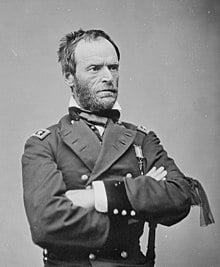
William Tecumseh Sherman was born on February 8, 1820, in Lancaster, Ohio, into a prominent family with strong political and legal connections. However, tragedy struck early in Sherman’s life when his father died suddenly in 1829, leaving his mother to raise 11 children alone. Unable to support them all, she sent nine-year-old Sherman to live with the influential Ewing family, where he was raised by Thomas Ewing Sr., a U.S. senator and cabinet member.
Sherman’s adoptive family provided him with a privileged upbringing and access to elite education. He attended the United States Military Academy at West Point, where he graduated sixth in his class in 1840, although he was known more for his rebellious nature and temper.
Sherman saw no combat during the Mexican-American War (1846-1848), as he was stationed in California handling administrative duties.
After the war, Sherman struggled with financial instability and bounced between military assignments, banking, and law. He resigned from the army in 1853 and attempted a banking career in San Francisco, which ultimately failed during the Panic of 1857. In 1859, he took a job as superintendent of the Louisiana State Seminary of Learning & Military Academy (now Louisiana State University), where he opposed secession but also warned of the devastation war would bring.
At the outbreak of the Civil War, Sherman was deeply pessimistic about the Union's chances, famously declaring that it would take at least 200,000 soldiers to subdue the South—a prediction that turned out to be eerily accurate.
Sherman’s Contribution to the Civil War
At First Bull Run in July 1861, Sherman commanded a brigade in the loss, but earned the respect of senior officers, including Ulysses S. Grant. However, after being assigned to Kentucky, he suffered a nervous breakdown, overwhelmed by the war.
Sherman proved his resilience at Shiloh in April 1862, and played a key role in the Siege of Vicksburg (May–July 1863), cutting the Confederacy in half.
With Grant’s promotion to General-in-Chief, Sherman took command in the Western Theater, leading the Atlanta Campaign to a decisive victory.
His most infamous campaign, the March to the Sea (November–December 1864), devastated Georgia as his troops cut a 300-mile path of destruction from Atlanta to Savannah and continuing on to Columbia. This led to General Joseph E. Johnston’s surrender on April 26, 1865, just weeks after Lee surrendered to Grant.
Early Life and Character Development
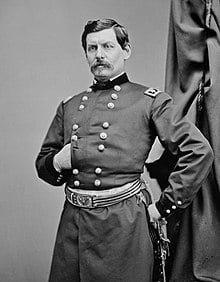
George Brinton McClellan was born on December 3, 1826, in Philadelphia, Pennsylvania, into a wealthy family. His father, Dr. George McClellan, was a prominent surgeon and the founder of Jefferson Medical College.
From an early age, McClellan displayed remarkable intelligence and ambition, entering the University of Pennsylvania at just 13 years old with the intent of studying medicine. However, he soon switched career paths and secured an appointment to the United States Military Academy at West Point, where he graduated second in his class of 59 cadets in 1846.
McClellan's time at West Point established his reputation as a brilliant student and engineer.
McClellan fought during the Mexican-American War (1846-1848), participating in the battles of Contreras, Churubusco, and Chapultepec. His experiences in Mexico earned him two brevet promotions for bravery, although he saw relatively little direct combat.
Following the war, McClellan took on engineering and railroad executive roles, designing improvements to military fortifications and rail transport. His time in the railroad industry—where he became president of the Ohio and Mississippi Railroad—refined his organizational skills and leadership style, but also reinforced his tendency toward methodical planning rather than bold action.
By the time the Civil War began in 1861, McClellan was already seen as one of the most promising military minds in the country. His strong political connections and reputation as an organizational genius quickly propelled him to national prominence.
McClellan’s Contribution to the Civil War
After the Union’s disastrous defeat at the He was able to turn a demoralized and disorganized force into a disciplined, well-prepared army that loved him. His soldiers idolized him, calling him "Little Mac" and "The Young Napoleon" due to his strategic mind. Despite his organizational genius, McClellan was plagued by indecision, excessive caution, and arrogance, leading to several critical blunders that prolonged the war. He openly insulted President Lincoln, referring to him as “nothing more than a well-meaning baboon.” Perhaps his biggest mistake was not acting on superior information during the battle of Antietam. Despite having Lee’s battle plans in his hands, McClellan hesitated for 18 hours before acting, allowing Lee to consolidate his forces and prolong the war further.
Notable Moments
McClellan launched the first major Union offensive with his Peninsula Campaign, aiming to capture Richmond by advancing up the Virginia Peninsula. His plan was strategically sound, but his cautious nature led to constant delays. Despite outnumbering Confederate forces, he hesitated at critical moments, allowing Confederate generals to counter his moves effectively.
The Seven Days’ Battles (June 25 - July 1, 1862) saw McClellan retreating despite winning most engagements, handing Lee a psychological victory. His reluctance to press the attack led Lincoln to lose confidence in his leadership.
McClellan’s greatest moment—and biggest missed opportunity—came at Antietam, where he intercepted Lee’s battle plans (Special Order 191) but failed to capitalize on the intelligence.
This was a turning point, as it gave Lincoln the victory he needed to issue the Emancipation Proclamation. However, Lincoln was infuriated by McClellan’s failure to crush Lee’s army, leading to his removal from command on November 5, 1862.
McClellan’s Biggest Blunders
Early Life
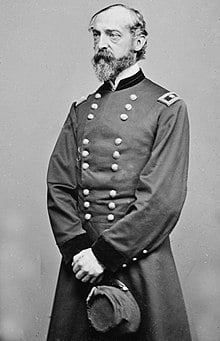
George Gordon Meade was born on December 31, 1815, in Cádiz, Spain, where his father, Richard Worsam Meade, was serving as a U.S. naval agent. However, when his father suffered financial ruin, the family was forced to return to the United States in 1817, living in relative poverty. This shaped Meade’s early life and gave him plenty of struggles, giving him a driven and more serious personality.
Meade attended West Point and did not distinguish himself as an exceptional student but was known instead for his discipline, attention to detail, and temper, which would earn him the nickname “The Old Snapping Turtle.”
After brief service in the Second Seminole War (1835-1842), Meade resigned from the military in 1836 to pursue a career in civil engineering. However, in 1842, he rejoined the Army’s Corps of Topographical Engineers, where he excelled in mapping and surveying, contributing to important coastal defenses along the Atlantic. His engineering background gave him a keen understanding of terrain and logistics, skills that would prove invaluable during the Civil War.
Meade also served in the Mexican-American War (1846-1848), seeing action at Palo Alto and Monterrey, but by the time of the Civil War, he was a little-known but highly competent officer with a good reputation.
Meade’s Contribution to the Civil War
Meade was a steady, capable general who is best known for leading the Union to victory at the Battle of Gettysburg (July 1863). Often overshadowed by Grant and Sherman, he played a crucial role in defeating Lee’s Army of Northern Virginia.
Meade was commissioned as a brigadier general of volunteers in 1861 and led a brigade in the Army of the Potomac where he saw plenty of action and was wounded.
At Fredericksburg, Meade led one of the few successful Union assaults, briefly breaking through Confederate lines. However, due to poor coordination, reinforcements never arrived, and the attack failed. His aggressive leadership caught Lincoln’s attention, leading to his promotion to major general.
On June 28, 1863, just three days before the Battle of Gettysburg, Meade was unexpectedly given command of the entire Army of the Potomac. Despite the short notice, Meade skillfully positioned his forces on high ground and defeated Lee’s invasion of the North in a victory. Lincoln expected Meade to chase down Lee’s retreating army and force another decisive battle. Lincoln privately expressed:
"We had them in our grasp. We had only to stretch forth our hands and they were ours."
Sheridan before the war
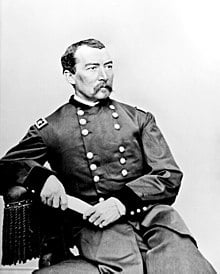
Philip Henry Sheridan was born on March 6, 1831, in Albany, New York, though some sources suggest he may have been born in County Cavan, Ireland, before his family immigrated to the United States. Raised in Somerset, Ohio, Sheridan grew up in a working-class Irish-American household, developing a tough and aggressive personality that would later define his military career.
Sheridan secured an appointment to the United States Military Academy at West Point in 1848, but his temper got him into trouble early on. In one notable incident, he was suspended for a year after getting into a physical altercation with a fellow cadet, who later became a Confederate general.
Before the Civil War, Sheridan spent nearly a decade on the Western frontier, fighting in skirmishes against Native American tribes and learning the logistics of cavalry warfare. Unlike other prominent Union generals like Grant and Sherman, Sheridan saw no action in the Mexican-American War, meaning that the Civil War would be his first major test as a battlefield commander.
Sheridan’s Contribution to the Civil War
Philip Sheridan became one of the most aggressive and effective Union generals, particularly in the use of cavalry. His ability to move fast, strike hard, and disrupt Confederate supply lines made him a key figure in Grant’s final campaigns against Lee.
In 1864, Grant appointed Sheridan as head of the Cavalry Corps of the Army of the Potomac, a role in which he revolutionized Union cavalry tactics. Previously, Union cavalry had been used primarily for scouting and reconnaissance, but Sheridan turned them into an offensive force capable of independent operations.
Sheridan led a daring cavalry raid deep into Confederate territory during the Battle of Yellow Tavern, where his forces killed famed Confederate cavalry leader J.E.B. Stuart.
He was also instrumental in the Shenandoah Valley Campaign, where the Union's scorched-earth campaign destroyed the Confederacy's ability to supply Lee’s army while simultaneously decimating the South’s infrastructure.
Final Campaigns Against Lee (1865)
Sheridan’s cavalry played a crucial role in Grant’s Overland Campaign, helping to cut off Lee’s escape routes in early 1865. His forces were instrumental in the final Union victories at Five Forks (April 1, 1865) and Appomattox (April 9, 1865), where he forced Lee’s retreat and eventual surrender.
After Lee’s surrender, Grant praised Sheridan, saying:
"I believe General Sheridan has no superior as a general, either living or dead, and perhaps not an equal."
Early Life and Character Development
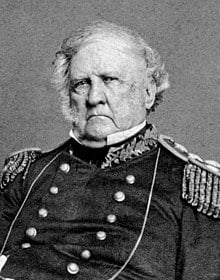
Winfield Scott Hancock was born on February 14, 1824, in Montgomeryville, Pennsylvania. Named after General Winfield Scott, one of the most famous American military leaders of the early 19th century, Hancock’s destiny as a soldier seemed almost predetermined.
He served with distinction in the Mexican-American War (1846-1848), earning a brevet promotion for gallantry, showcasing his natural ability to lead under fire.
After the war, Hancock held a variety of administrative and frontier postings, including service in California and Kansas, gaining valuable experience in logistics and command.
Hancock’s Contribution to the Civil War
Winfield Scott Hancock became one of the most admired Union generals, known for his brilliant leadership in battle, particularly at Gettysburg. He was beloved by his soldiers and earned the nickname "Hancock the Superb" for his steady command, inspiring presence, and tactical skill.
Notable Moments
Peninsula Campaign & Seven Days’ Battles (1862)
Hancock rose to prominence in McClellan’s Peninsula Campaign, where his division played a key role at Williamsburg (May 1862). His counterattack against a larger Confederate force helped secure a Union victory, earning him recognition and a promotion.
Antietam (September 1862)
After General Israel B. Richardson was mortally wounded, Hancock was given a new command, arriving just in time to help hold the Union position at the Bloody Lane. His leadership helped prevent a Confederate counterattack and kept the Union center intact.
Gettysburg (July 1863) – Hancock’s Finest Hour
When General John Reynolds was killed on July 1, Hancock was sent by General Meade to take command of the Union forces on the field. He was able to recognize the importance of specific positions on the battlefield, making his leadership at Gettysburg crucial to the Union victory. His efforts earned him immense praise from his men and superiors.
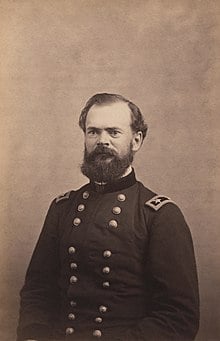
James Birdseye McPherson was born on November 14, 1828, in Clyde, Ohio, to a working-class farming family. Despite his humble beginnings, McPherson displayed exceptional intelligence and ambition from an early age. His strong academic performance earned him an appointment to the United States Military Academy at West Point in 1849, where he excelled. He graduated first in his class in 1853, ahead of future Civil War leaders like Philip Sheridan and John M. Schofield.
McPherson’s early career was spent working on coastal defenses and fortifications. His engineering background made him a meticulous planner and a master of battlefield logistics, a skill that would prove crucial during the Civil War.
McPherson’s Contribution to the Civil War
James B. McPherson was one of the most promising young generals in the Union Army, rising rapidly through the ranks and playing a key role in Grant’s Western campaigns. Here are some of his most notable moments:
McPherson served as Chief Engineer during the successful Union assaults on these two key Confederate forts in Tennessee. McPherson was instrumental in the overnight reorganization of Union defenses after the surprise Confederate attack. This led to a drastic turn on the second day of battle, allowing Grant to secure victory.
As commander of XVII Corps, McPherson played a crucial role in Grant’s Vicksburg Campaign, leading his men through bold river crossings, flanking maneuvers, and a prolonged siege. This cut off Confederate reinforcements significantly, leading to another win for the Union.
After Sherman took over from Grant, McPherson was given command of the Army of the Tennessee, making him one of the youngest army commanders in U.S. history at just 35 years old.
As Union forces closed in on Atlanta, Confederate General John Bell Hood launched a surprise counterattack, attempting to smash through McPherson’s lines. Unfortunately, while scouting the battlefield, McPherson rode too close to Confederate positions, and a Confederate soldier demanded his surrender. McPherson then tipped his hat, turned his horse, and attempted to escape, only to be shot through the chest and killed instantly.
His death was a severe blow to Sherman and the Union Army. Sherman later wrote:
"I lost my right bower, for he was my strongest friend and most trusted officer."
McPherson was the highest-ranking Union officer killed in battle during the Civil War. His body was sent back to Ohio, where he was buried with full military honors.
Early Life
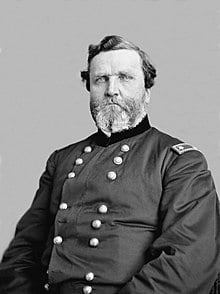
George Henry Thomas was born on July 31, 1816, in Southampton County, Virginia, to a slaveholding family. Despite his Southern roots, he remained loyal to the Union during the Civil War, earning both admiration and betrayal from his native state.
As a child, he narrowly survived Nat Turner's 1831 rebellion, an event that likely shaped his views on discipline and Southern society. Encouraged by his family, he attended West Point, graduating 12th in 1840 alongside William T. Sherman.
Distinguishing himself in the Mexican-American War, he earned three brevet promotions for bravery and later taught at West Point, instructing future Confederate leader J.E.B. Stuart. When the Civil War began, Thomas remained with the Union, a choice that estranged him from his family, with his sisters never forgiving him.
Thomas’s Contribution to the Civil War
George H. Thomas was one of the most effective yet underrated Union generals, earning the nickname "The Rock of Chickamauga" for his unyielding defense during one of the war’s most desperate battles.
His first major victory came at Mill Springs in January 1862, where he delivered the Union’s first significant win in the Western Theater, securing control of Kentucky.
His defining moment came at Chickamauga, where he saved the Union Army from total destruction. While most Union forces were routed, Thomas and his men held firm on Snodgrass Hill, repelling repeated Confederate attacks.
His leadership prevented a catastrophic defeat, as he organized an orderly retreat after General William Rosecrans fled the battlefield. Following Chickamauga, Thomas replaced Rosecrans as commander of the Army of the Cumberland. At Missionary Ridge, his soldiers launched an unexpected charge, overwhelming Braxton Bragg’s forces and securing one of the most dramatic Union victories.
A year later, Thomas delivered another major victory in Nashville, crushing John Bell Hood’s army and effectively eliminating the last major Confederate force in the Western Theater. Ulysses S. Grant criticized his patience, but Thomas’s methodical approach led to a decisive and flawless Union victory.
Thomas never wrote memoirs or sought personal glory, leading to his historical under appreciation. However, military historians recognize him as one of the finest generals of the Civil War, a leader who was steady, disciplined, and utterly reliable—a true Rock of the Union Army.
Generals from the Confederacy
Under the banners of the Confederacy, figures like Robert E. Lee, Stonewall Jackson, and Nathan Bedford Forrest became legends, leading troops into some of the most defining and hard-fought conflicts in American history. While some names stand out, many other Confederate commanders played pivotal roles, making crucial decisions that influenced the war’s ultimate outcome.
At Gettysburg Flag Works, we understand the deep historical significance of the flags these generals fought under. The battle flags carried into combat were symbols of their cause, rallying points for soldiers, and markers of leadership on the battlefield. Below, we explore the key Confederate generals, their strategies, and their impact on history—many of whom led their men forward under some historic banners.
Robert E. Lee
Click to learn more
Thomas “Stonewall” Jackson
Click to learn more
James Longstreet
Click to learn more
J.E.B. Stuart
Click to learn more
Nathan Bedford Forrest
Click to learn more
A.P. Hill
Click to learn more
P.G.T. Beauregard
Click to learn more
Early Life and Character Development
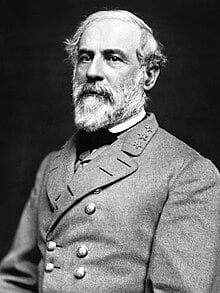
Robert E. Lee was born on January 19, 1807, at Stratford Hall, Virginia, into a prestigious family. His father, Revolutionary War hero Henry "Light-Horse Harry" Lee, suffered financial ruin and abandoned the family, leaving young Lee to grow up with a strong sense of duty and self-reliance.
Graduating second in his class at West Point in 1829 without a single demerit, Lee excelled in military engineering and spent 17 years in the U.S. Army Corps of Engineers.
During the Mexican-American War (1846-1848), he served under General Winfield Scott, proving his skill in reconnaissance and battlefield strategy at Cerro Gorde, Contreras, and Chapultepec. Scott later called him "the very best soldier that I ever saw."
By 1860, Lee was a respected Lieutenant Colonel, but the Civil War forced a difficult choice. Though opposed to secession, he resigned from the U.S. Army in April 1861, refusing to fight against his home state. Instead, he joined the Confederate Army, believing his duty lay with Virginia.
Lee’s Contribution to the Civil War
Initially serving as a military advisor to Confederate President Jefferson Davis, Lee took command after General Joseph E. Johnston was wounded at the Battle of Seven Pines in May 1862.
He quickly launched the Seven Days’ Battles, driving Union forces away from Richmond.
In August, he decisively defeated General John Pope at Second Manassas, showcasing his strategic brilliance.
The following month, he led his first invasion of the North, but after his battle plans were intercepted, he fought to a draw at Antietam and was forced to retreat. Though not a defeat, the battle allowed Abraham Lincoln to issue the Emancipation Proclamation.
Lee’s greatest triumph came at Chancellorsville in May 1863, where he and Stonewall Jackson executed a daring flank attack to rout a larger Union force. However, Jackson was fatally wounded by friendly fire, a devastating loss for Lee.
Emboldened, Lee launched his second invasion of the North, culminating in the Battle of Gettysburg.
Over three days in July 1863, his army clashed with Union forces in the war’s bloodiest battle. On July 3, he ordered Pickett’s Charge, a disastrous frontal assault that led to massive Confederate casualties. Forced to retreat, Lee’s army never fully recovered.
Grant’s Overland Campaign and Surrender
With Ulysses S. Grant leading the Union Army in 1864, Lee was pushed into a defensive war. Grant’s relentless Overland Campaign, including battles at The Wilderness, Spotsylvania, and Cold Harbor, led to the nine-month Siege of Petersburg.
By April 1865, Lee’s army was starving, outnumbered, and surrounded. On April 9, he surrendered to Grant at Appomattox Court House, effectively ending the Civil War. Grant’s lenient terms allowed Confederate soldiers to return home, and Lee urged his men to do so peacefully, telling them, "Go home and be good citizens."
Lee’s Biggest Blunders
Despite his tactical brilliance, Lee made several critical mistakes that contributed to the Confederacy’s defeat.
His preference for aggressive offensives, even when outnumbered and low on supplies, led to unsustainable losses by 1864. His most costly blunder came at Gettysburg with Pickett’s Charge on July 3, 1863—a disastrous frontal assault that resulted in thousands of Confederate casualties and ended his hopes for a decisive Northern victory.
As the war dragged on, Lee struggled to adapt to Grant’s strategy. While he relied on maneuver warfare, Grant’s relentless attrition tactics forced him into prolonged trench warfare, which the Confederacy could not sustain.
Additionally, Lee focused almost entirely on Virginia, neglecting the Western Theater, where Union victories under Grant and Sherman gradually cut off the South’s resources, sealing the Confederacy’s fate.
Early Life and Character Development
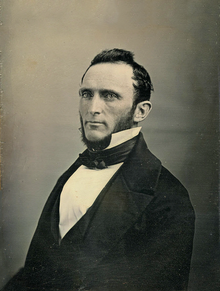
Thomas Jonathan “Stonewall” Jackson was born on January 21, 1824, in Clarksburg, Virginia (now West Virginia). Orphaned at a young age after losing his parents and sister to illness, he was raised by relatives and worked on their farm with little formal education.
Determined to improve himself, he taught himself to read and write, walking miles to borrow books—a discipline that shaped his character.
In 1842, Jackson secured an appointment to West Point, where he initially struggled due to his limited schooling. Over time, he improved, graduating 17th out of 59 cadets in 1846.
He distinguished himself in the Mexican-American War, earning brevet promotions for his fearless leadership in battles like Veracruz, Contreras, and Chapultepec.
Leaving the army in 1851, Jackson became a professor at the Virginia Military Institute, teaching artillery tactics and natural philosophy. He was unpopular with his students due to his rigid discipline and eccentric habits.
Jackson’s Contribution to the Civil War
Thomas “Stonewall” Jackson was one of the Confederacy’s most brilliant and aggressive generals, known for his rapid maneuvers, surprise attacks, and unbreakable resolve. His leadership in the Shenandoah Valley Campaign and at key battles like Bull Run, Antietam, and Chancellorsville made him Robert E. Lee’s most trusted commander.
Jackson first gained fame at the First Battle of Bull Run in July 1861, where he held firm against Union attacks.
General Barnard Bee, hoping to rally his men, pointed to Jackson’s unshakable line and shouted, "There stands Jackson like a stone wall!" Though Bee was killed, the name "Stonewall" stuck, cementing Jackson as a Southern legend.
Using speed, deception, and aggressive attacks, he won five battles in the Shenandoah Valley Campaign despite being significantly outnumbered. His rapid movements earned his troops the nickname "Jackson’s Foot Cavalry."
His greatest success—and final battle—came at Chancellorsville in May 1863. Jackson and Lee divided their army against a larger Union force. Jackson led a 12-mile flanking march and launched a surprise attack on May 2, sending Union troops into chaos.
That night, while scouting ahead of his lines, he was accidentally shot by his own men. His left arm was amputated, but he developed pneumonia and died on May 10. His final words were, "Let us cross over the river and rest under the shade of the trees."
Lee mourned him deeply, saying, "He has lost his left arm, but I have lost my right."
Early Life and Character Development
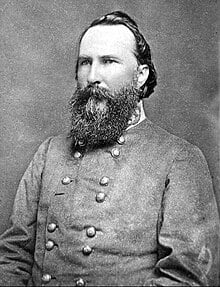
James Longstreet was born on January 8, 1821, in Edgefield District, South Carolina, but grew up in northern Georgia. In 1838, Longstreet secured an appointment to West Point, where he befriended future Union General Ulysses S. Grant. Though not academically exceptional, his true strengths lay in leadership and battlefield tactics rather than academics.
During the Mexican-American War (1846-1848), Longstreet served under General Winfield Scott and distinguished himself, but was wounded in the leg. His bravery earned him brevet promotions and valuable experience in command, logistics, and artillery tactics.
In 1861, when Alabama seceded, he resigned his commission and joined the Confederacy, quickly rising to the rank of brigadier general.
Longstreet’s Contribution to the Civil War
Longstreet first gained recognition for his leadership at First Bull Run in July 1861. During the Peninsula Campaign and Seven Days’ Battles in 1862, he played a key role in Lee’s counteroffensive, leading decisive attacks at Gaines’ Mill and Glendale.
His defensive expertise was critical at Antietam, where, despite being outnumbered 2-to-1, his corps repelled Union assaults, allowing Robert E. Lee to retreat in good order.
Major strategic disagreement between Longstreet and General Lee began when Longstreet opposed Pickett’s Charge, urging a flanking maneuver instead.
He had no choice but to carry out Lee’s doomed frontal assault, where he watched as Confederate forces suffered a disastrous defeat.
Later that year, he reinforced the Western Theater, delivering his finest moment at Chickamauga by leading a breakthrough that routed Union forces, securing the Confederacy’s only major victory in the West.
In May 1864, at The Wilderness, Longstreet launched a devastating flank attack, nearly destroying Grant’s army. However, like Stonewall Jackson a year earlier, he was accidentally shot by his own men, leaving him incapacitated for months—a blow the Confederacy never fully recovered from.
He returned to command during the Siege of Petersburg, but by 1865, the Confederate cause was lost.
Surrender at Appomattox
At Appomattox, Longstreet urged Lee to surrender, recognizing that further resistance was futile.
Early Life
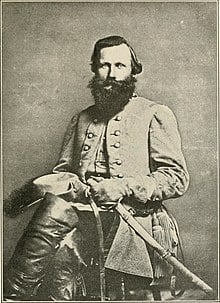
J.E.B. Stuart was born on February 6, 1833, in Patrick County, Virginia, into a family with a strong military tradition.
In 1850, Stuart entered West Point, where he was mentored by Robert E. Lee, who admired his aggressive instincts. Assigned to the U.S. Army cavalry, Stuart gained valuable experience fighting on the Western frontier, serving in Bleeding Kansas and under officers like Albert Sidney Johnston and Lee.
When Virginia seceded in 1861, Stuart resigned from the U.S. Army and joined the Confederacy, quickly proving himself as one of the war’s finest cavalry commanders.
Stuart’s Contribution to the Civil War
At the First Battle of Bull Run in July 1861, Stuart’s cavalry helped turn a Union retreat into a full-blown panic, chasing federal forces back to Washington.
A year later, during the Peninsula Campaign, he humiliated Union General George McClellan by riding his cavalry 150 miles around the entire Union army, destroying supply lines and proving Confederate mobility.
Stuart was aggressive in his attacks, though he failed to detect McClellan’s discovery of Lee’s battle plans, contributing to the costly battle at Antietam.
His most controversial moment came during the Gettysburg Campaign. Sent on a reconnaissance mission, Stuart instead took his cavalry on an extended raid, capturing wagons and supplies but arriving too late to provide Lee with crucial intelligence.
By the time he reached Gettysburg on July 2, Lee had already engaged the Union without cavalry support, contributing to key strategic mistakes.
Death at Yellow Tavern (May 11, 1864)
On May 11, 1864, at Yellow Tavern, Stuart was wounded by Union Private John A. Huff. He died the next day in Richmond, reportedly telling his men, "I am resigned; God’s will be done."
Early Life and Character Development
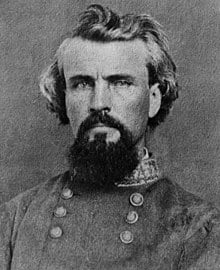
Nathan Bedford Forrest was born on July 13, 1821, in Chapel Hill, Tennessee, into a poor, frontier farming family. He received less than a year of schooling. However, he displayed natural intelligence, business acumen, and an imposing physical presence, standing over six feet tall with a reputation for being fearless and aggressive from a young age.
After his father died in 1837, Forrest took responsibility for the family, moving to Mississippi to seek economic opportunities. He became a self-made millionaire, first as a slave trader and cotton plantation owner, then as a real estate and livestock investor. By the eve of the Civil War, he was one of the wealthiest men in the South, despite coming from humble origins.
Though he lacked military education or experience, his natural instincts, aggression, and mastery of cavalry tactics would make him one of the most feared and effective Confederate commanders of the war.
Forrest’s Contribution to the Civil War
Enlisting as a private, he quickly rose to command, personally funding and equipping his own cavalry unit. His defiance of orders at Fort Donelson in February 1862, where he led 700 men in a daring escape rather than surrender, marked him as a leader unwilling to accept defeat.
At the Battle of Shiloh in April 1862, Forrest covered the Confederate retreat and, despite being shot through the spine, fought his way out while carrying another soldier to safety.
Cavalry Raids and Tactics
Over the next two years, he led devastating cavalry raids against Union supply lines, using speed and surprise to keep Union forces off balance. His philosophy was best captured in his famous quote, "Get there first with the most men."
Forrest’s greatest victory came at Brice’s Crossroads, where, despite being outnumbered nearly 2-to-1, he used superior tactics to rout a larger Union force.
However, his reputation was severely damaged by the Fort Pillow Massacre, where his troops overwhelmed a garrison of Black and white Union soldiers. Reports of mass executions after the surrender led to widespread condemnation, though Forrest denied ordering the killings.
In the final phase of the war, he led cavalry operations in John Bell Hood’s disastrous Tennessee campaign, surrendering in May. He declared, "Any man who is in favor of further prosecution of this war is a fit subject for a lunatic asylum."
Despite surrendering, Forrest remained a deeply controversial figure, refusing to acknowledge the Confederacy’s defeat.
Post-War Activities and Controversy
After the war, Forrest was named the first Grand Wizard of the Ku Klux Klan, an organization that used terror tactics against Black Americans and Reconstruction officials. His role in the Klan remains a subject of intense historical scrutiny, as some accounts suggest he later distanced himself from the group.
Early Life
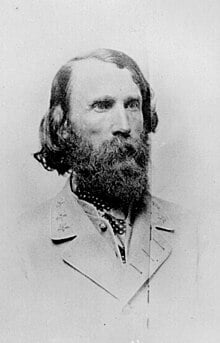
Ambrose Powell Hill Jr. was born on November 9, 1825, in Culpeper, Virginia, into a wealthy and prominent Southern family.
He attended West Point, where he was classmates with several future Civil War generals, including George McClellan, Thomas “Stonewall” Jackson, and George Pickett.
After graduation, Hill served in the Mexican-American War (1846-1848), though he saw little action. He later worked with the U.S. Coast Survey before resigning from the U.S. Army in March 1861 to join the Confederacy, as his home state of Virginia seceded.
Hill’s Contribution to the Civil War
Hill rose to prominence during the Peninsula Campaign and Seven Days’ Battles in June 1862, where his division played a decisive role at Gaines’ Mill, breaking Union lines and forcing McClellan into retreat.
At Second Bull Run, his troops held firm against repeated Union assaults, setting up Longstreet’s devastating counterattack.
His most famous moment came at Antietam, where his division marched 17 miles from Harpers Ferry and arrived just in time to strike Ambrose Burnside’s flank, preventing a Union breakthrough and saving Robert E. Lee’s army.
Throughout the Overland Campaign and the Siege of Petersburg, Hill’s declining health limited his effectiveness, though his corps held key defensive positions.
On April 2, 1865, as Union forces broke through Confederate lines, Hill rode forward to rally his men but was shot through the chest and killed instantly. His death symbolized the final collapse of Confederate defenses, as Petersburg fell the next day, leading to Lee’s surrender a week later.
Early Life and Character Development

Pierre Gustave Toutant Beauregard was born on May 28, 1818, in St. Bernard Parish, Louisiana, into a wealthy French Creole family. Raised on a sugar plantation near New Orleans, Beauregard was fluent in both French and English.
Beauregard attended West Point, where he excelled as an engineer and artillery specialist, graduating second in the Class of 1838. While at the academy, he earned the lifelong nickname "Little Napoleon" due to his strict discipline, precision, and admiration for Napoleon Bonaparte. His West Point instructors included Winfield Scott and Robert Anderson, the latter of whom would later be his adversary at Fort Sumter.
Beauregard served as an engineer in the Mexican-American War (1846-1848), where he fought under Winfield Scott and participated in the siege of Veracruz and the battles of Contreras, Churubusco, and Mexico City. His engineering helped shape fortifications and siege strategies, earning him brevet promotions for gallantry.
After the war, he returned to the Army Corps of Engineers, overseeing coastal defenses in Louisiana. Shortly before the Civil War, he was briefly appointed Superintendent of West Point, but his Southern loyalties led to his dismissal. When Louisiana seceded in early 1861, Beauregard resigned from the U.S. Army and joined the Confederacy, becoming one of the first Confederate generals appointed by Jefferson Davis.
Beauregard’s Contribution to the Civil War
At Fort Sumter in April 1861, Beauregard commanded Confederate forces at Charleston Harbor, firing the first shots of the Civil War after Major Robert Anderson refused to surrender.
Three months later, at First Bull Run, he and General Joseph E. Johnston led Confederate forces to a stunning victory, with reinforcements under Stonewall Jackson holding the line. Despite his success, tensions with Davis arose when the president claimed credit for battlefield strategy.
At Shiloh, Beauregard took command after Albert Sidney Johnston’s death and initially drove Grant’s army back. However, his controversial decision to halt the attack at nightfall allowed Union reinforcements to arrive. Grant counterattacked the next day, turning a near-victory into a Confederate defeat. Beauregard was soon removed from frontline command.
Defensive Operations and Weaknesses
Reassigned to defensive operations, Beauregard successfully held Charleston for nearly two years and later coordinated the defense of Petersburg in 1864, buying Robert E. Lee time to fortify the city.
Despite his strengths in engineering and defensive warfare, Beauregard made several costly mistakes. His failure to press the attack at Shiloh allowed Grant to regroup, costing the Confederacy a potential victory. His political clashes with Davis led to his removal from key commands, and in 1864, his delay to reinforce Lee allowed Grant to gain ground around Richmond. Though he saw himself as the Confederacy’s chief strategist, his grand strategic plans were often ignored, frustrating leadership and limiting his influence.